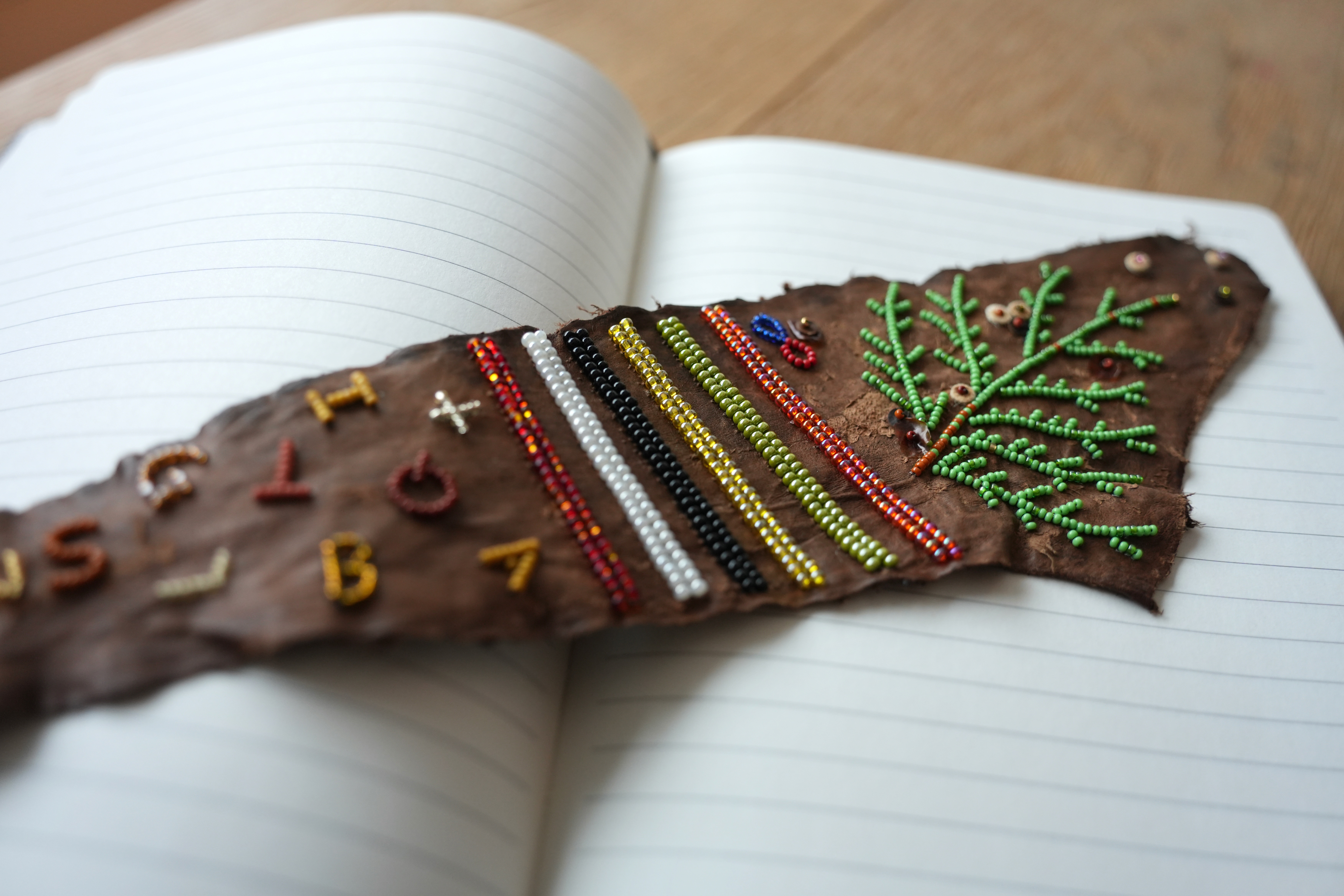BIO
Mel Lefebvre (she/they) is a Two-Spirit Michif, Nehiyaw, French, Irish mother, traditional tattoo practitioner, scholar, artist, and community worker based in Tiohtiá:ke /Montreal. A card-carrying member of the MMF, Mel’s grandmother's family came from Fisher Branch, Manitoba to Quebec in the early 1900s. Some of her Métis family names include Delorme, Desjardins, and Guiboche. Her practice is focused on traditional tattooing as a mode of healing and reconnection for Indigenous people with a particular focus on 2SLGBTQ+ and Indigenous women as well as reclaiming and imagining traditional tattoos in contemporary and future contexts. Working closely with the Native Women’s Shelter of Montreal, Mel is vice president of the board, advocating for the safety of Indigenous people as well as Indigenous representation, education, and employment.
Community Connection
Mel Lefebvre My birth name is Melanie Ann Lefebvre. I am known and introduce myself as Mel Lefebvre or simply Mel. I am a Two-Spirit (2S), Michif, Nehiyaw, French, Irish mother and traditional tattoo practitioner. I am also a community worker, artist, writer, and scholar. My grandmother's family came from Fisher Branch, Manitoba in the early 1900s. I am a member of the Manitoba Métis Federation and a descendant of many Métis families on my father’s side including Desjardins, Delorme and Guiboche. I am the great great great grandchild of Madeleine Vivier and Urbain Delorme, leaders of the bison hunt. Side by side with Louis Riel Sr. my ancestors fought for Red River free trade and in the 1885 Resistance at Duck Lake with Gabriel Dumont, and were members of the Cypress Hills Métis hunting brigade (Barkwell, 2016). I am sharing my family names because that is how we understand our kinship relations and how other Indigenous folks can identify us, through our communities and the land we belong to.
I grew up in small towns and cities, in Ontario, Prince Edward Island and Quebec. My father is Métis and my mother is Irish. My father’s mother is Lilianne St-Laurent (Métis). She was the youngest of her siblings and the only one born in Quebec. Her family had moved from Fisher Branch, Manitoba in the early 1900s to work at a textile factory. Lilianne’s mother was Marie Desjardins (Métis). Marie died when my grandmother was 10 years old. Marie and her husband Antoine St-Laurent had seven children who all identified as Cree except my grandmother: Marie died when my grandmother was 10 and so those teachings were never passed on. Marie’s mother was Elise Delorme (Métis, Nakoda) and her father was Albert Desjardins (Métis, Nehiyaw, Saulteaux).
My practice is focused on traditional tattooing as a mode of healing and reconnection for urban Indigenous people, with a special focus on 2SLGBTQ+ and Indigenous women, as well as uncovering, (re)claiming and creating traditional tattoos in contemporary and future contexts. I have worked closely with the Native Women's Shelter of Montreal for some years now advocating for Indigenous safety, culturally appropriate health care, and child welfare reform in Quebec. This grassroots activism has led me to traditional tattooing as a mode of healing that I can offer to the community.
I take my role as a cultural carrier very seriously. I am consistently guided by my Elders: Kawennotas Sedalia Fazio, Dr. Mary Wilson, Blu Waters, and Joseph Naytowhow who gifted me with the name kâkwa okwêmêsiw: porcupine's twin. I acknowledge that the porcupine is one of the original tattoo artists, who's quills were some of our original tools for gifting these transformative embodied markings, so kâkwa has a lot to teach me and I follow in kâkwa’s footsteps, amongst some of my other guides: wasp, bison, owl, fox, maarsii // hay hay for your guidance.


